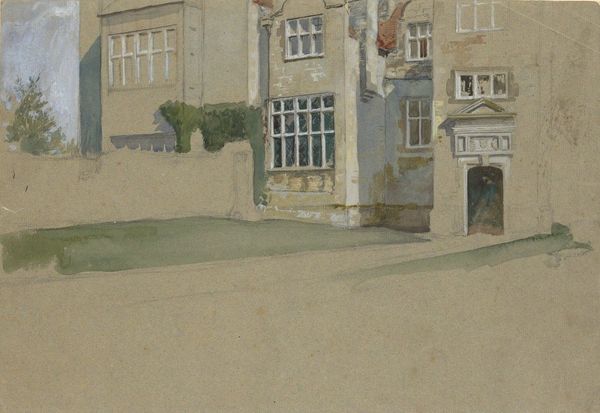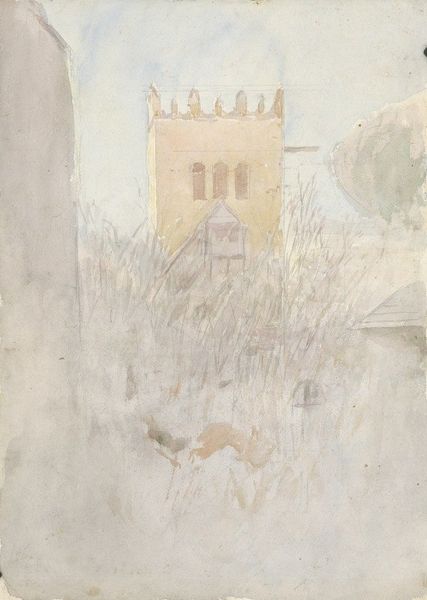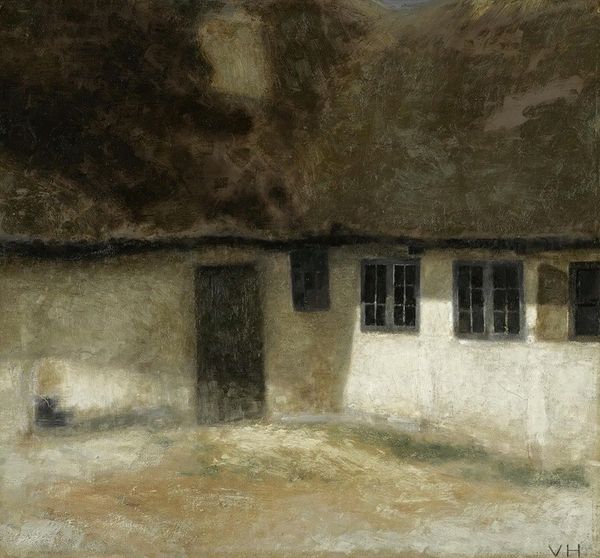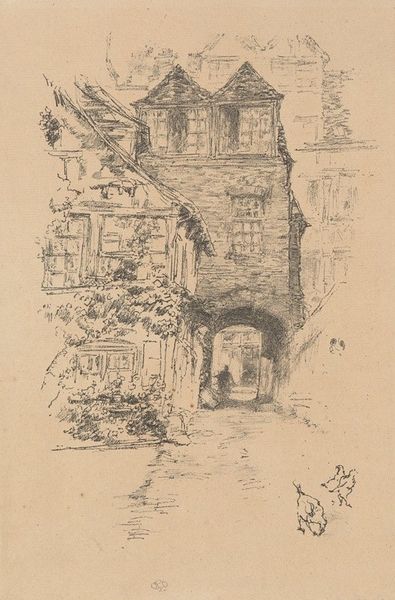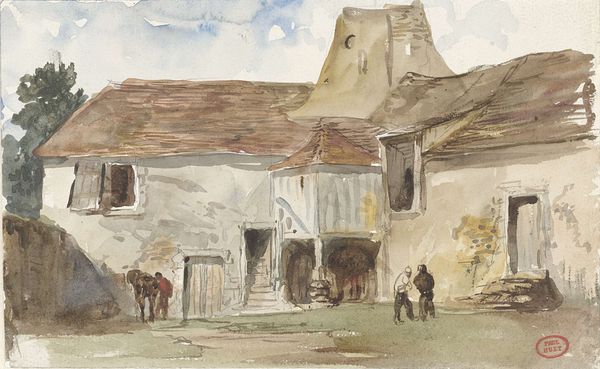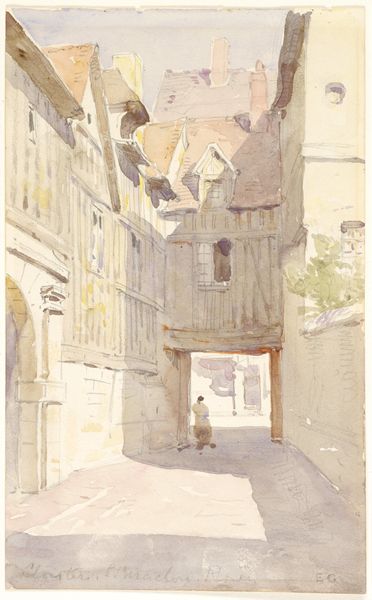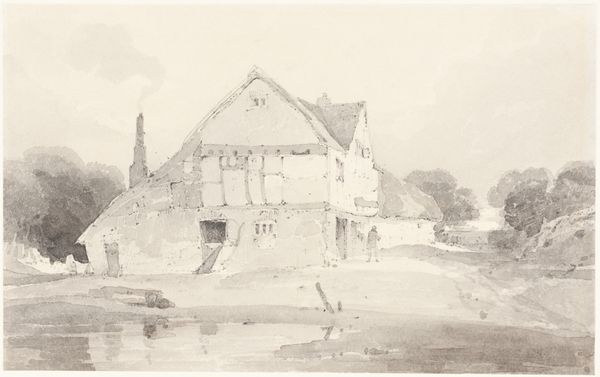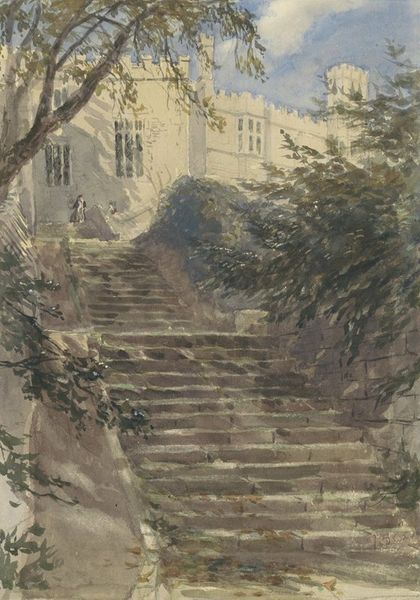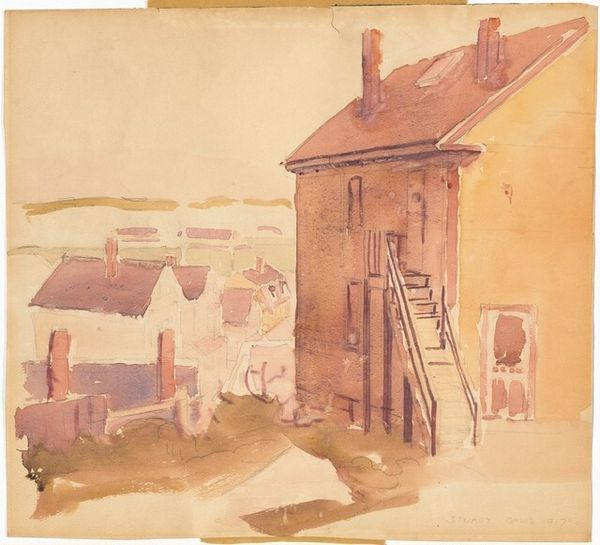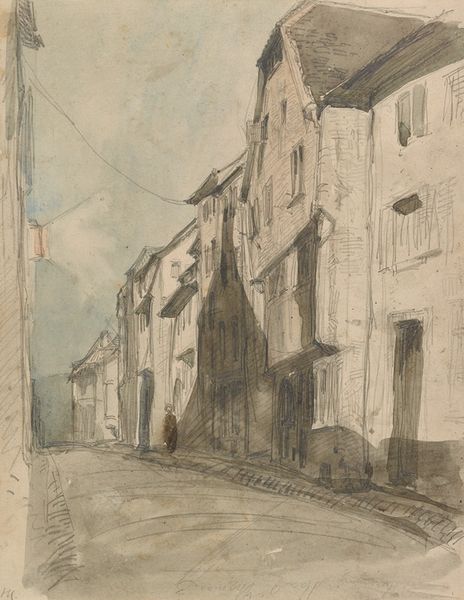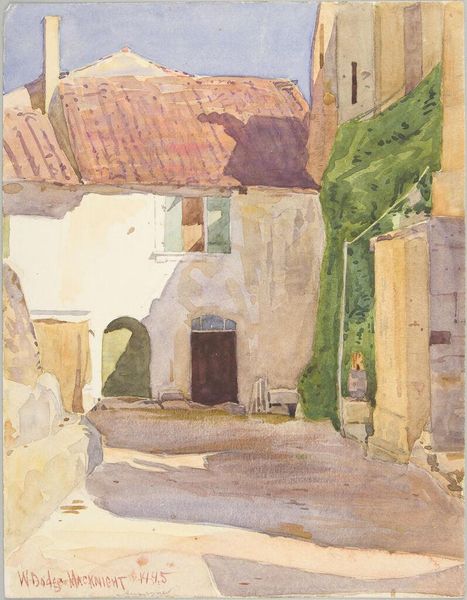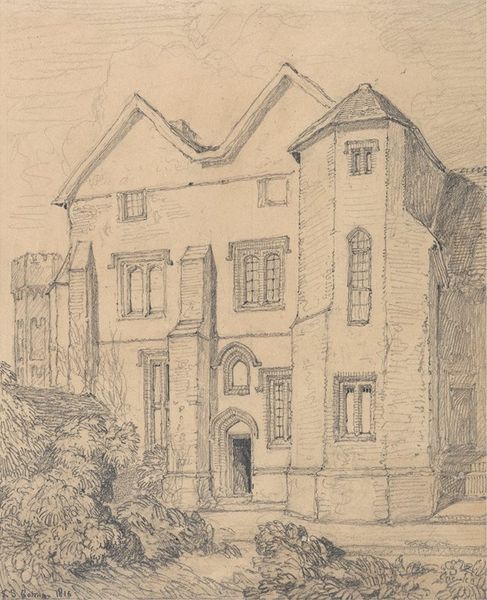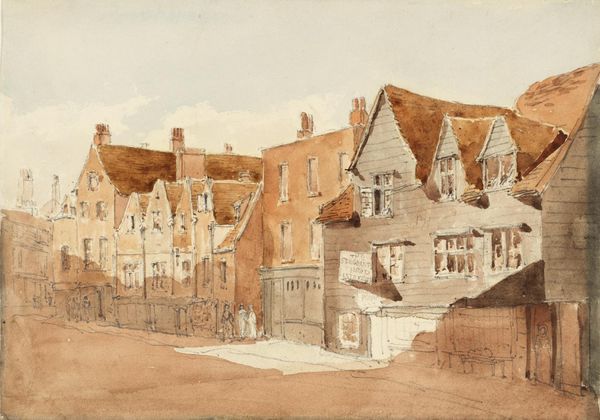
painting, watercolor, architecture
#
medieval
#
painting
#
landscape
#
charcoal drawing
#
oil painting
#
watercolor
#
architecture
Copyright: Public Domain: Artvee
Editor: We’re looking at "Study of an English medieval house" by Edwin Austin Abbey. It’s either a watercolor or oil painting – the materials aren't noted here. It has a dreamy, ethereal quality because of the light washes. How do you interpret this work? Curator: I see a negotiation with history, not just of the house itself but also of representation. The architectural study is filtered through the artist’s own era. We must acknowledge Abbey's gaze – how might he be romanticizing the past and for whom? What political motivations are present in such idealized portrayals of a pre-industrial England? Does the haziness romanticize a patriarchal society that was far from equitable? Editor: That's a perspective I hadn't considered. I was only thinking about the building itself and the light. It's a reminder that there's always a social context, a narrative of power embedded in even seemingly innocent depictions. Is there an intentional contrast here between the imposing architecture and almost delicate medium that the painting is created on? Curator: Precisely! We could unpack this apparent fragility to investigate how societal values influenced perceptions of the domestic sphere versus the world outside it. Consider, too, what the work excludes; whose voices are absent, both within the artwork and historically? Does seeing this artwork in the collection provoke further exploration on Abbey's biases? Editor: That's a powerful question! Now I wonder, seeing the composition as almost like a stage set, whether the absence suggests an invitation to the viewer to imagine the social history ourselves. Thanks, that’s really expanded how I understand it. Curator: My pleasure. Remember that all art is engaged with societal questions of visibility, longing, and perhaps, an unspoken manifesto. It’s down to us to decode it.
Comments
No comments
Be the first to comment and join the conversation on the ultimate creative platform.
